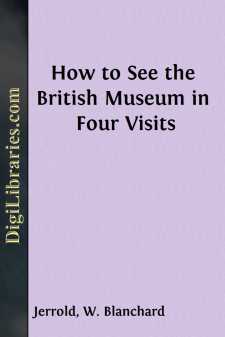Categories
- Antiques & Collectibles 13
- Architecture 36
- Art 48
- Bibles 22
- Biography & Autobiography 813
- Body, Mind & Spirit 142
- Business & Economics 28
- Children's Books 15
- Children's Fiction 12
- Computers 4
- Cooking 94
- Crafts & Hobbies 4
- Drama 346
- Education 46
- Family & Relationships 57
- Fiction 11828
- Games 19
- Gardening 17
- Health & Fitness 34
- History 1377
- House & Home 1
- Humor 147
- Juvenile Fiction 1873
- Juvenile Nonfiction 202
- Language Arts & Disciplines 88
- Law 16
- Literary Collections 686
- Literary Criticism 179
- Mathematics 13
- Medical 41
- Music 40
- Nature 179
- Non-Classifiable 1768
- Performing Arts 7
- Periodicals 1453
- Philosophy 64
- Photography 2
- Poetry 896
- Political Science 203
- Psychology 42
- Reference 154
- Religion 513
- Science 126
- Self-Help 84
- Social Science 81
- Sports & Recreation 34
- Study Aids 3
- Technology & Engineering 59
- Transportation 23
- Travel 463
- True Crime 29
How to See the British Museum in Four Visits
Categories:
Description:
Excerpt
INTRODUCTION.
The money to found a British Museum was raised by a lottery in the middle of the last century. Sir Hans Sloane having offered his books and museum of natural history to Parliament, for less than half its value (20,000£.), it was purchased, together with the famous Harleian and Cottonian MSS., and deposited in Montague House, Bloomsbury, which had been bought of the Earl of Halifax, for the sum of 10,250£. Of the present British Museum this beginning forms a very insignificant part. The nucleus was established however; and soon eminent men, who valued their literary and scientific collections as storehouses that should be accessible to all classes of students, began to turn their attention to the collections in Montague House. Foremost among the donors George the Second should be mentioned, as having made over to the nation the royal library, together with the right of demanding a copy of every book entered at Stationers' Hall. Successively, the libraries of Sir Joseph Banks, Dr. Birch, Sir John Hawkins, Dr. Burney and Garrick, and the Royal, Arundel, Lansdowne, Bridgewater, and other MSS. were added to the great store. Captain Cook returned home with additions to the museum of natural history; Sir William Hamilton's collection of vases was purchased in 1772; the spoils of Abercrombie's Egyptian campaign enriched the museum with some fine Egyptian antiquities; grants of money secured the Townley marbles, the Phigalian sculptures, and at last the Elgin marbles; and of late, the accessions to the vast collection, including Layard's treasures, the Xanthian marbles, fossils, birds, curiosities, from the frozen seas, China, the solitudes of Central Africa, and other remote places, where scientific men have been of late prosecuting their studies have been received. In 1823 it was allowed by Parliament that the collection had grown too large for the house in which it was crammed; and accordingly in this year it was resolved to destroy the old residence of the Earl of Halifax, and build a new structure on its site. Sir Robert Smirke, the architect of the present structure, has certainly had good cause to complain of the niggardly supplies voted from time to time for the building, which has been twenty-eight years in progress. The regulations for the admission of the public have fairly kept pace with the progress of those liberal ideas to which the collection is greatly indebted, and of which it is a monument. It will be interesting for the visitor of to-day, to contrast the rules by which he is admitted, with those that fettered his ancestors of the eighteenth century. In the year 1759, the trustees of this institution published their "Statutes and Rules relating to the Inspection and Use of the British Museum." This instructive document may now serve to illustrate the darkness from which, even now, we are struggling. Those visitors who now consider it rather an affront to be required to give up their cane or umbrella at the entrance to our museums and galleries, will be astonished to learn, that in the early days of the museum, those persons who wished to inspect the national collection, were required to make previous application to the porter, in writing, stating their names, condition, and places of abode, as also the day and hour at which they desired to be admitted....


